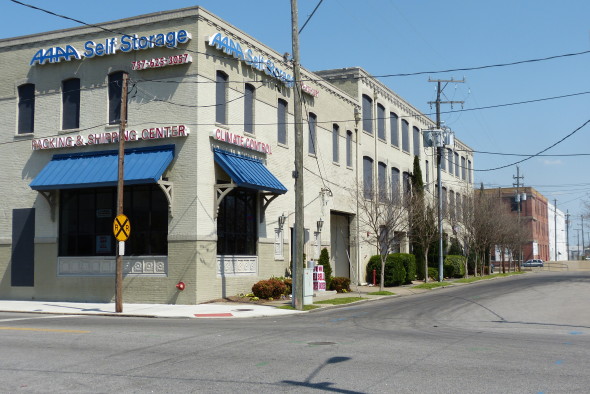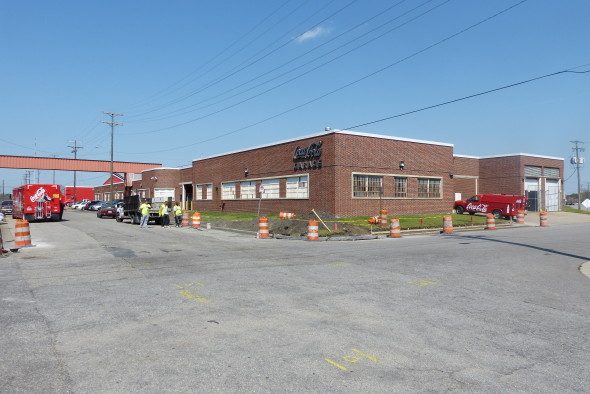Williamston-Woodland Historic District, Norfolk, VA
 The Williamston-Woodland Historic District is located in an area north of downtown Norfolk first developed in the late nineteenth and early twentieth centuries. The district contains over forty resources which consist of primarily light industrial with some retail/restaurant commercial buildings. There are two notable purpose-built Coca-Cola buildings still in use, the regionally known Doumar’s restaurant, a bagging warehouse, and a century-old, five-store warehouse built to store peanuts but used for coffee processing for most of its history. The style of the buildings is generally Commercial Style and variations of Modern design, including several prominent examples of Moderne as well as a few Art Deco and International Style inspired buildings.
The Williamston-Woodland Historic District is located in an area north of downtown Norfolk first developed in the late nineteenth and early twentieth centuries. The district contains over forty resources which consist of primarily light industrial with some retail/restaurant commercial buildings. There are two notable purpose-built Coca-Cola buildings still in use, the regionally known Doumar’s restaurant, a bagging warehouse, and a century-old, five-store warehouse built to store peanuts but used for coffee processing for most of its history. The style of the buildings is generally Commercial Style and variations of Modern design, including several prominent examples of Moderne as well as a few Art Deco and International Style inspired buildings.
The Williamston-Woodland Historic District was found significant under Criterion C for Architecture at the local level of significance as a good example of an early Norfolk commercial and light industrial development. The district retains its integrity with a dense concentration of historic resources and good examples of several types of early-to-mid twentieth century building styles and types.  The area is also locally significant under Criterion A for Ethnic Heritage (European) with its significant number of still extant buildings built and owned by Benjamin and David L. Margolius. The Margolius brothers ran a large bagging facility as well as owned interest in several other businesses in the district. They served on bank and corporation boards and were one of the leading business families in early-to-mid-twentieth century Norfolk, as well as being one of the most prominent Jewish families in the city. Finally, the area is also locally significant under Criterion A for Commerce and Industry as related to the large number of light industrial and production facilities within the district and the story they tell of the movement of this type of business out of the historic downtown. The Period of Significance extends from 1906, the date of construction of the earliest extant building, to 1964 as the end date of a continually evolving commercial area.
The area is also locally significant under Criterion A for Ethnic Heritage (European) with its significant number of still extant buildings built and owned by Benjamin and David L. Margolius. The Margolius brothers ran a large bagging facility as well as owned interest in several other businesses in the district. They served on bank and corporation boards and were one of the leading business families in early-to-mid-twentieth century Norfolk, as well as being one of the most prominent Jewish families in the city. Finally, the area is also locally significant under Criterion A for Commerce and Industry as related to the large number of light industrial and production facilities within the district and the story they tell of the movement of this type of business out of the historic downtown. The Period of Significance extends from 1906, the date of construction of the earliest extant building, to 1964 as the end date of a continually evolving commercial area.
